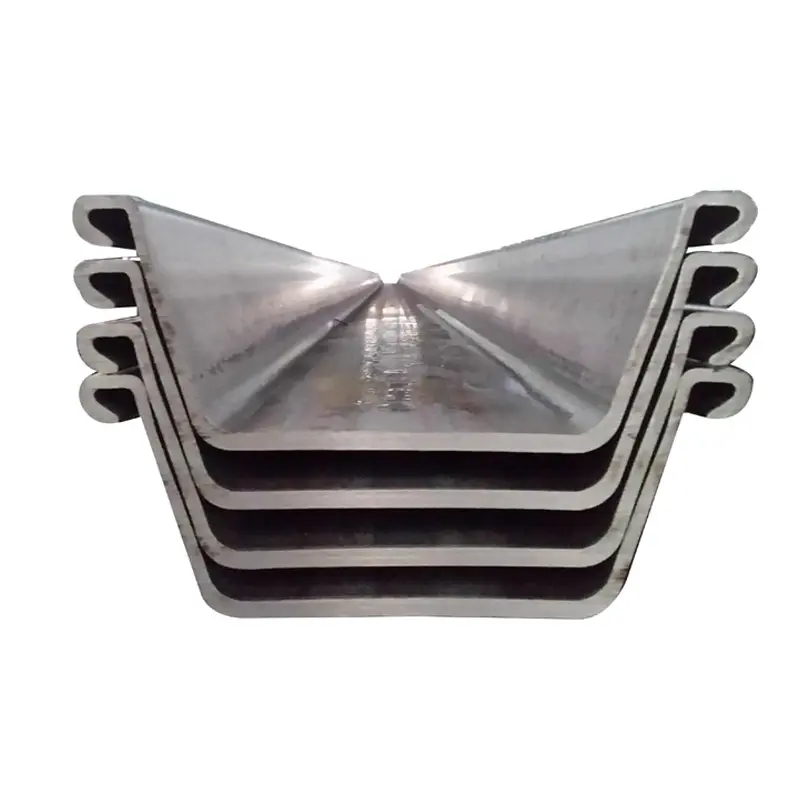Q345B steel sheet pile is a high strength structural material widely used in civil engineering projects, particularly in environments requiring robust load bearing capacity and resistance to moderate corrosion. Q345B is a Chinese standard steel grade (GB/T 1591) with a minimum yield strength of 345 MPa, making it suitable for demanding applications such as retaining walls, foundation supports, and waterfront structures. The steel contains alloying elements like manganese, silicon, and vanadium, which enhance its mechanical properties, including tensile strength, impact resistance, and ductility. Q345B steel sheet piles are typically produced through hot rolling, forming the steel into interlocking profiles such as U shaped or Z shaped sections that provide both structural rigidity and watertightness when installed. The surface of these sheet piles can be treated with galvanization, paint, or anti corrosion coatings to improve durability in corrosive soils or marine environments. Engineering design using Q345B sheet piles involves calculating soil pressures, water loads, and bending moments to determine the appropriate pile length and section modulus. These sheet piles are commonly used in large scale construction projects like port facilities, river dikes, and deep excavations for buildings and tunnels. The manufacturing process adheres to strict quality standards, including chemical composition analysis, mechanical property testing, and dimensional inspections to ensure compliance with GB/T 20933 (standard for steel sheet piles). Contractors appreciate the high strength to weight ratio of Q345B steel, which allows for efficient installation using vibratory or impact hammers while reducing material usage compared to lower strength grades. Despite their strength, Q345B sheet piles maintain good formability, enabling them to be driven into various soil types, including sandy, clayey, or gravelly substrates. Their reliable performance and cost effectiveness make Q345B steel sheet piles a popular choice in both domestic and international construction markets, particularly in projects where high structural integrity and moderate corrosion resistance are required.


